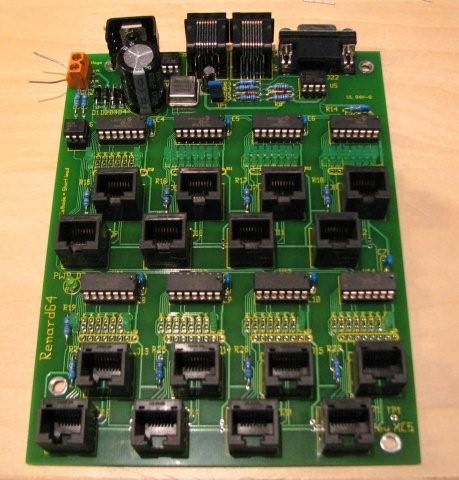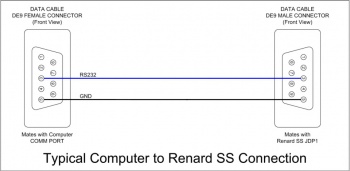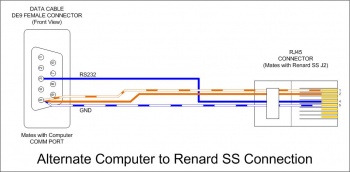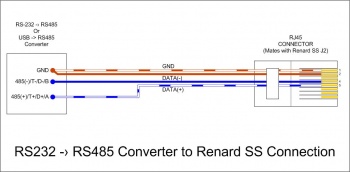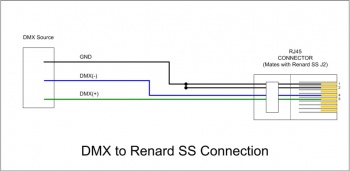Renard 64XC
Introduction
- The Renard 64 is a PIC microcontroller based Christmas light controller designed to be used with external Solid State Relays or SSRs. The board design is based on the PIC-based 8-port dimmer concept originally developed by Phil Short. Information on the original concept can be viewed here. Generic information pertaining to current Renard designs (including maximum channel count) can be found on the Renard wiki page.
Disclaimers
- The standard disclaimers pertaining to the information contained on this wiki page are listed here.
The Board
Circuit Diagram
- The schematic diagram can be found here.
- Key circuit components
- Connectors
- J3 – RS485 outgoing data
- J4 – RS232/RS485 incoming data (RS485 with JP1 Shunted)
- J5 - Output Connector for Channels 29-32
- J6 - Output Connector for Channels 21-24
- J7 - Output Connector for Channels 13-16
- J8 - Output Connector for Channels 5-8
- J9 - Output Connector for Channels 25-28
- J10 - Output Connector for Channels 17-20
- J11 - Output Connector for Channels 9-12
- J12 - Output Connector for Channels 1-4
- J13 - Output Connector for Channels 61-64
- J14 - Output Connector for Channels 53-56
- J15 - Output Connector for Channels 45-48
- J16 - Output Connector for Channels 37-40
- J18 - Output Connector for Channels 57-60
- J19 - Output Connector for Channels 49-52
- J20 - Output Connector for Channels 41-44
- J21 - Output Connector for Channels 33-36
- J22 – RS232 incoming data, DE9 connector for direct connect to show computer serial port.
- Connectors
- IC Chips
- U6 – H11AA1 Optocoupler, used to generate the Zero Cross signal
- U4 & U5 – ST485BN, RS232/RS485 Transmitter/ Receiver
- U7-U14 – PIC16F688 Microcontrollers
- IC Chips
- Resistors
- R10-R13, R20-R23 – Channel LED Current Limiting Network (x7)resistors.
- R15-18, R24-R27 - Channel LED Current Limiting Resistor.
- Resistors
- LEDs
- PWR – Lit whenever the voltage regulator is generating 5 VDC.
- LEDs
- When U6 is programmed with the Diagnostic Firmware:
- Channel 2 - will blink ON/OFF to indicate that the PIC is operating correctly.
- Channel 5 - will blink ON/OFF to indicate that the Zero Cross signal is getting to the PIC correctly.
- Channel 6 - will be ON whenever the PIC is receiving data correctly.
- Channel 7 - will only be ON when the PIC has identified a Framing Error while receiving data.
- Channel 8 - will only be ON when the PIC has identified an Overrun Error while receiving data.
- Other Components
- U1 – LF50CV, 5 VDC Voltage Regulator
- U3 – ECS-2100AX-18.432MHZ, 18.432 MHz Crystal Clock Oscillator
- Other Components
- Jumpers
- JP1 – RS232 signal ground. Install a shunt (jumper) on JP1 when receiving RS232 data.
- Jumpers
- Test Points
- +5 – Output from voltage regulator, should be +5 ± 0.1 VDC
- GND – Ground
- ZC – Zero Cross signal
- Test Points
Firmware
- The PICs (U7 - U14) must be programmed with the latest firmware for the Renard 64 to operate properly. The firmware can be found on the Renard Firmware wiki page.
Powering the Renard 64
- Input power requirements: An AC source of 6.3VAC
DC power:
- The Renard 64XC generates all the DC voltage that it requires on-board and no external DC voltage source is required.
AC Power:
- The board is designed to be powered with a 6.3VAC, 1A transformer, providing both power and a zero-crossing signal at the same time. One potential transformer for this application is the Xicon 41FD010 transformer (mouser p/n 41FD010). The center-tap of this transformer should be left open, perhaps covered with a wire nut to protect it from inadvertant short-circuits.
- If all the LEDs are used in the REN64XC, a 1000mA could be used if all the channels were used. This leaves no room for error on the transformer listed above. One option is to use a 41FD030 which is a 3A version of the transformer listed above. Now the interesting thing is, at the time of this writing, the 41FD030 is actually cheaper than the smaller one. It is not a good idea to power more than one board off a single transformer.
- If you do not have 120VAC power, then you may have a larger challenge. A cost effective transformer from 220VAC to 6.3VAC has not been located. There are options but you should get some expert assistance from forums members. Careful selection of resistor replacements with special care to the overall maximum input voltage is required and each case is special.
AC Power Handling Capability
Hooking Up the Renard 64
Data Connections
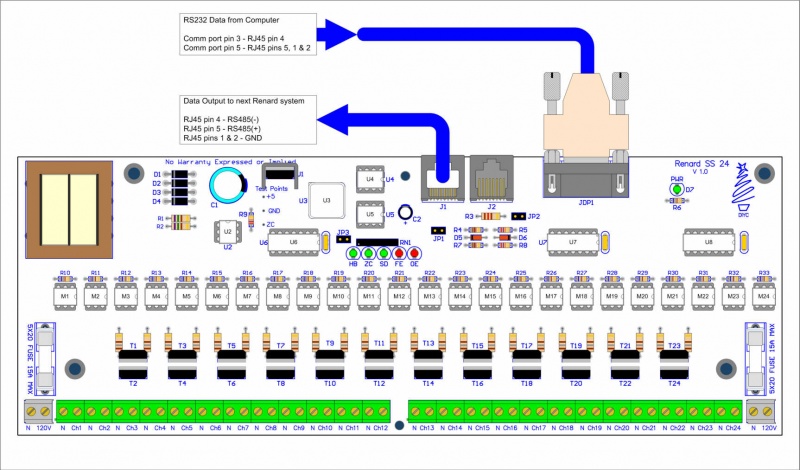
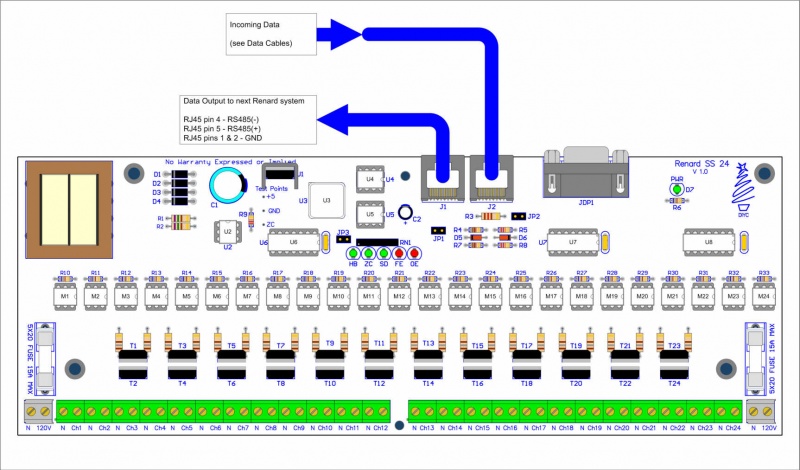
Data Cables
- Data cables for Renard 64 board hookup directly to computer COMM port
PC DE9 Pin 3 to Renard 64XC JDP1 Pin 3 PC DE9 Pin 5 to Renard 64XC JDP1 Pin 5
PC DB9 Pin 3 to RJ45-pin 4 PC DB9 Pin 5 to RJ45-pin 5 and pin 1 and/or pin 2
- Data cable for Renard 65 board hookup using a RS232->RS485 converter
- Due to the many different types of RS232->RS485 converters available the drawing only refers to the signals coming from the converter. Check the documentation for your converter to figure out how/where to hook up the correct wires.
RS485(-) Signal to RJ45-pin 4 RS485(+) Signal to RJ45-pin 5
- Data cable for Renard 64 board hookup in a DMX environment
DMX using XLR Connectors XLR connector pin 1 (GND) to RJ45-pin 1 and/or pin 2 XLR connector pin 2 (Data-) to RJ45-pin 4 XLR connector pin 3 (Data+) to RJ45-pin 5 DMX using RJ45 (CAT5) Connectors RJ45 connector pin 1 (Data+) to RJ45-pin 5 RJ45 connector pin 2 (Data-) to RJ45-pin 4 RJ45 connector pins 7 & 8 (GND) to RJ45-pins 1 & 2
- Data cable for Renard 64 board hookup to other Renard boards
- Generally only a regular straight-thru CAT5 cable is required to connect Renard 64XC boards to other Renard boards. For the few exceptions (ie Ren24 V2.5), check the wiki page for those boards to see what their unique requirements are.
Cable Lengths
- Data cables connecting the Renard SS boards directly to a computer COMM port should not be longer than 50 feet according to the RS-232 standard. This distance can also be greatly reduced by using poor quality cables. However, this distance can be increased buy using high quality, low impedance cables.
- Data cables connecting the Renard SS boards directly to other Renard boards or any other RS-485 source can be up to 4,000 feet in length for data rates up to 100Kbps according to the RS-485 standard.
Connecting Multiple Renard Boards
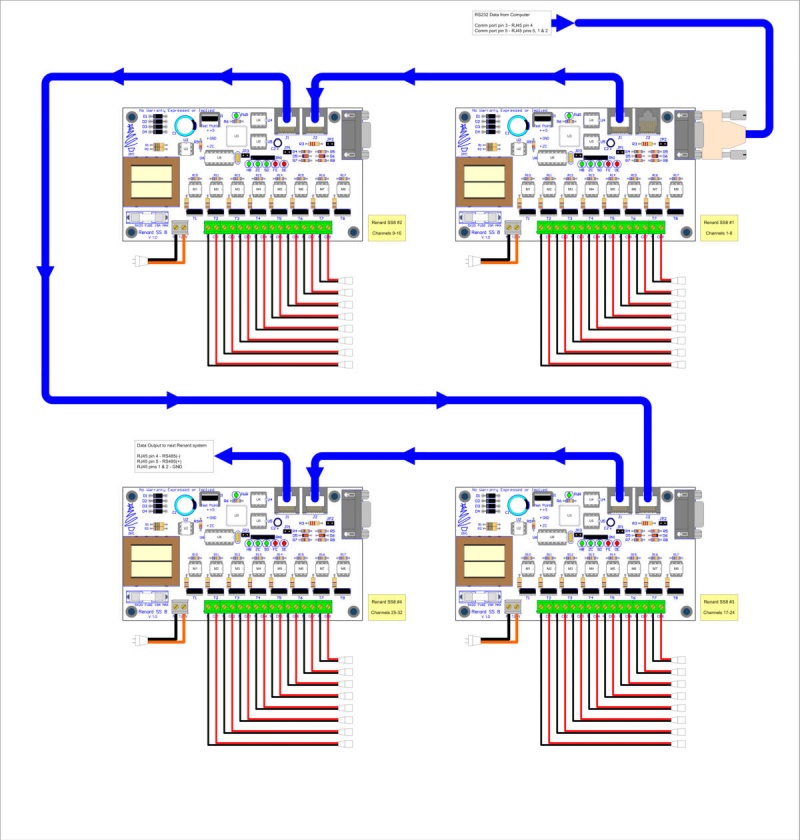
- The above image shows how Renard boards in general can be daisy chained together. Renard SS8 boards are used in the image just as an example of how all Renard SS boards can be connected together.
- Key things to remember when connecting ALL Renard boards together:
- You only need one instance of the Renard Dimmer plug-in in Vixen for each physical COMM port being used. You just need to make sure that the plug-in is setup for the total number of channels for all the Renard boards connected to that COMM port. In the above example, the plug-in would be set for 32 channels.
- The total number of Renard boards that can be connected together depends on the event period and the baud rate being used. More information on the total number of channels capable with Renard systems can be found here here.
Computer Setup
- VIXEN Settings
- The Renard 64 board requires the Renard Dimmer [Vixen 1.1.*] or Renard Dimmer (modified) [Vixen 2.*] Plug-In.
- Renard Dimmer Plug-In Settings:
- Protocol Version: 1
- COM1 (or whichever COM port you are connected to)
- Baud: 57600 (default firmware value, if firmware is changed then this needs to be changed to match the firmware)
- Parity: None
- Data bits: 8
- Stop bits: One
- Hold port open during the duration of the sequence execution: Checked
- Renard Dimmer Plug-In Settings:
Setup for Beginners and Troubleshooting
- If you are unsure that you have built your hardware correctly, you should follow the procedures contained in the Renard SS24 Beginners Setup Guide. These procedures will guide you through the steps to help setup the hardware for the first time.
- If you encounter any problems with your Renard SS24, you can go to the Troubleshooting Guide The Renard SS24. The troubleshooting guide contains a methodical process to try to isolate problems/malfunctions and gives suggestions of what to do to fix them.
